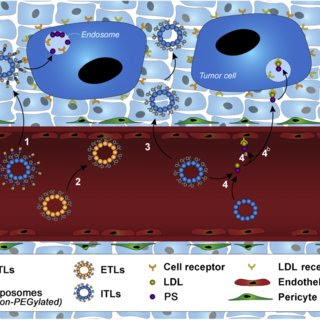Photodynamic inactivation of melanoma cells using aluminum chloride phthalocyanine-loaded solid lipid nanoparticles
Cutaneous melanoma is the most aggressive form of skin cancer and is particularly resistant to current treatments. Photodynamic therapy (PDT) is a well-known photoprocess used to treat certain cancers, including non-melanoma skin cancer. The photosensitizer aluminum chlorides phthalocyanine (ClAlPc) is used in PDT; however, its high hydrophobicity limits its photodynamic activity under physiological conditions. The goal of this study was to use direct emulsification to create solid lipid nanoparticles (SLN) containing ClAlPc. ClAlPc-loaded SLNs (ClAlPc/SLNs) were studied in vitro in B16-F10 melanoma cells for particle size and distribution, zeta potential, morphology, encapsulation efficiency, stability, and phototoxic action. ClAlPc/SLN had a mean diameter of 100–200nm, a homogeneous size distribution (polydispersity index of 0.3), a negative zeta potential, and spherical morphology.
Encapsulation efficiency was close to 100%. X-ray diffraction and differential scanning calorimetry were used to investigate the lipid crystallinity, which revealed that ClAlPc was integrated into the SLN matrix. Over a 24-month period, the ClAlPc/SLN formulations maintained their physicochemical stability without expelling the drug. In vitro, ClAlPc/SLN outperformed free ClAlPc in terms of phototoxicity against melanoma cells. As a result, our findings show that the ClAlPc/SLN described in this study has the potential to be used in future preclinical and clinical trials in PDT for melanoma treatment.
Chlorine
Chlorine is an element in Block P, Group 17, Period 3. It has the electron configuration [Ne]3s23p5. The covalent radius of the chlorine atom is 1024 pm, and its Van der Waals radius is 175 pm. The Chlorine Model Chlorine is a yellow-green gas in its elemental form. After fluorine, chlorine is the second lightest halogen. It has the highest electronegativity and electron affinity of any element, making it a powerful oxidizing agent. It is rarely found in nature by itself. Carl Wilhelm Scheele discovered and isolated chlorine in 1774. Humphry Davy identified it as an element for the first time in 1808.Authors P.L. Goto; M.P. Siqueira-Moura; A.C. Tedesco
Journal Int J Pharm
DOI 10.1016/j.ijpharm.2017.01.004

